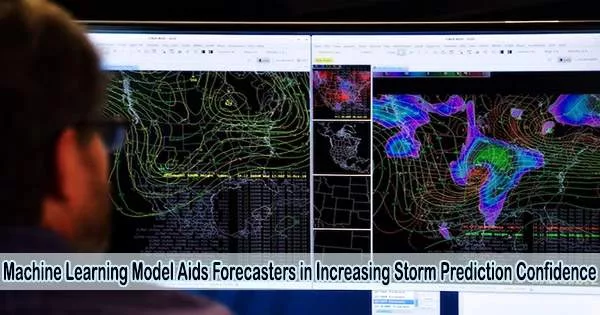The need of early warning and precise forecasts increases when severe weather is imminent and potentially lethal threats like torrential rain, hail, or tornadoes are possible. Weather experts from Colorado State University have provided storm forecasters with a strong new tool to boost confidence in their forecasts and perhaps save lives.
Russ Schumacher, a professor in the Department of Atmospheric Science at Colorado State University and a climatologist, has been leading a group in the development of a sophisticated machine learning model for improving accurate forecasting of hazardous weather over the continental United States for a number of years.
The model was initially trained on past records of extreme rainfall, but it is now intelligent enough to provide reliable forecasts of occurrences like tornadoes and hail four to eight days in advance, which is the critical window for forecasters to alert the public so they can prepare. The model is called CSU-MLP, or Colorado State University-Machine Learning Probabilities.
Led by research scientist Aaron Hill, who has worked on refining the model for the last two-plus years, the team recently published their medium-range (four to eight days) forecasting ability in the American Meteorological Society journal Weather and Forecasting.
Working with Storm Prediction Center forecasters
The model is currently being tested and improved by the researchers in collaboration with forecasters at the national Storm Prediction Center in Norman, Oklahoma, taking into account real-world factors. The technology offers an unbiased, confidence-inspiring measure to help forecasters choose whether to issue public warnings about impending weather, rather than serving as a substitute for the vital skill of human forecasters.
I love fundamental research. I love understanding new things about our atmosphere. But having a system that is providing improved warnings and improved messaging around the threat of severe weather is extremely rewarding.
Aaron Hill
“Our statistical models can benefit operational forecasters as a guidance product, not as a replacement,” Hill said.
Israel Jirak, M.S. ’02, Ph.D. ’05, is a science and operations officer at the Storm Prediction Center and co-author of the paper. He called the collaboration with the CSU team “a very successful research-to-operations project.”
“They have developed probabilistic machine learning-based severe weather guidance that is statistically reliable and skillful while also being practically useful for forecasters,” Jirak said. “The forecasters in Oklahoma are using the CSU guidance product daily, particularly when they need to issue medium-range severe weather outlooks.”
Nine years of historical weather data
A very sizable dataset with roughly nine years’ worth of meticulous historical weather observations over the continental United States is used to train the model. The results of previous weather occurrences are used to construct model “re-forecasts” that are integrated with these data.
The CSU researchers pulled the environmental factors from those model forecasts and associated them with past events of severe weather like tornadoes and hail. The end result is a model that, depending on current environmental variables like temperature and wind, can run in real time with current weather events and produce a probability of those types of dangers with a four to eight-day lead time.
Ph.D. student Allie Mazurek is working on the project and is seeking to understand which atmospheric data inputs are the most important to the model’s predictive capabilities.
“If we can better decompose how the model is making its predictions, we can hopefully better diagnose why the model’s predictions are good or bad during certain weather setups,” she said.
Hill and Mazurek are working to make the model not only more accurate but also more understandable and transparent for the forecasters using it.
For Hill, it’s most gratifying to know that years of work refining the machine learning tool are now making a difference in a public, operational setting.
“I love fundamental research. I love understanding new things about our atmosphere. But having a system that is providing improved warnings and improved messaging around the threat of severe weather is extremely rewarding,” Hill said.





